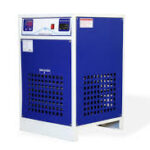Air Cooled Chillers
Air-cooled chillers are efficient refrigeration systems that use air circulation to remove heat from the coolant or refrigerant. Unlike water-cooled chillers, they operate independently of cooling towers.
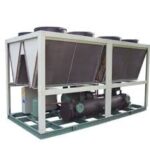
Water Cooled Chillers
Water-cooled chillers rely on water as a heat transfer medium, offering efficient cooling for large-scale operations. They are a preferred choice for high-rise buildings, factories, and industrial complexes.
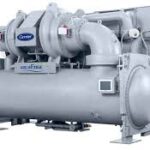
Screw Chillers
Screw chillers rely on screw compressors to deliver efficient and stable cooling. They are suitable for large-scale industrial and HVAC applications.
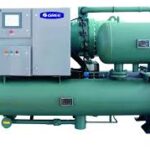
Variable Speed Chillers
Variable speed chillers feature compressors with VFD technology, enabling precise motor speed control to match real-time cooling load requirements efficiently.
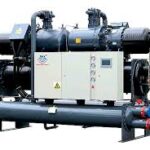
Oil Chiller
Oil chillers help control the temperature of lubricating oil in industrial processes. They keep oil within a safe operating range, preventing damage. These chillers improve efficiency and reduce downtime.
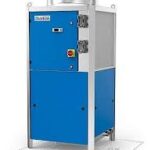
Hydraulic Oil Chiller
Hydraulic oil chillers use refrigeration technology to regulate oil temperature. They keep the oil within optimal limits for smooth operation. These chillers are essential for industrial applications.

Online Chiller
Online chillers ensure consistent cooling for various industrial processes. They support internet-based remote monitoring for better management. This enables quick diagnostics and efficient operation.
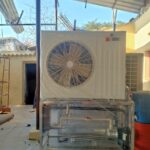
Glycol Chiller
Glycol chillers use a glycol-based coolant to regulate process temperatures. They prevent freezing while ensuring precise cooling. These chillers are essential in brewing, winemaking, and industrial applications.
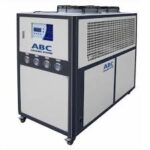
Spindle Chiller
Spindle chillers are cooling systems designed for high-speed machine spindles. They dissipate excess heat, preventing thermal damage. This improves efficiency and extends spindle durability.
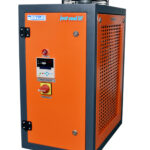
Refrigerated Air Dryer
Refrigerated air dryers lower the moisture content in compressed air systems. They cool the air to condense and remove water vapor. This helps prevent damage to pneumatic tools and equipment.
